1.e4 d6 2.d4 Nf6 3.Nc3 Nbd7 4.f4 Nb6
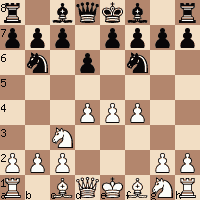
The normal move in this position is ...e5. Nb6 is a serious error. Black needs to fight for the center with c5 or e5. After ...Nb6, he uses a valuable tempo, and loses control of those squares. In addition, he also blocked both his b pawn, and the d8-a5 diagonal. These elements are required for Black to create counter play, if we end up castling on opposite wings.
Since Black’s counter play will come very slowly, it’s best to castle queenside, and then advance in the center, or attack on the kingside, depending upon how the contest unfolds.
5.Nf3 g6 6.Be3
It was important to decide if I should allow ...Ng4, or prevent this move with h3. However, “every move creates a weakness”. After h3, Black’s agile knight would target my kingside dark squares with ...Nh5, and I didn’t like the feel of those variations.
6...Bg7
6...Ng4 7.Bd2 Bg7 8.h3 Nf6 9.Bd3 with a space advantage and plenty of ways to improve my position. On the other hand, Black has trouble finding counter play and/or breaking down my center.
7.Qd2 Bg4
A very good move, which creates imbalance, and gives Black some hope.
8.Be2 Bxf3
The point of Black’s maneuver! Now I have to choose between accepting doubled pawns, and letting him capture my dark square bishop.
9.Bxf3
After 8.gxf3 … Black can work on my doubled pawns via the following sequence: ...Qd7 ... 000 ... Nh5 ... Bh6.
9...Nc4 10.Qd3 Nxe3 11.Qxe3
Evaluate Consequences of each Piece Exchange
It’s extremely important to evaluate the strategic consequences after an exchange of minor pieces.
We now have opposite color bishops and that means each player has an extra piece to exert influence on the square color his bishop controls.
This means Black will be fighting to control the dark squares, and I will be playing against the light squares.
11...0-0?
Too committal.
I now have a fixed target on the kingside and powerful attacking chances. Black should have kept his king in the center for right now, play ...c6 and develop his queen.
12.e5
The light square bishop immediately makes its presence felt. What I like best is that his knight can’t move to d5.
Know when to Advance Pawns on Knights
There are exceptions to every rule in chess. However, we need guidelines to help us find the best move. Here’s a general guideline I’ve formed about advancing pawns against knights.
When the knight is forced backward, the advance is often good (but the position still has to be evaluated). On the other hand, think carefully before advancing if the knight can move forward into the center, or advance deep into the board.
12...Ne8
Why this square?
I often wonder what they’re thinking when my opponents play a move like this. From d7 the knight would have supported ...c5, fighting for the center, and helping to open a line for his dark square bishop.
13.0-0-0
I didn’t even analyze 13.Bxb6 followed by Qe4 or Qf3. The pending attack will break like a storm. There’s no need to enter strange complications when you have a large strategic advantage, and your opponent doesn’t have counter play.
13...c6 14.h4
Black’s pieces are uncoordinated, and his queenside counter play is way too slow. I have a space advantage, and my forces are completely developed. That means it’s time to begin the attack.
14...Qb6 15.h5 Nc7 16.hxg6
Weigh the Pros and Cons of Exchanging Pawns
I wanted to see which way he would recapture before proceeding.
There can be pros and cons to exchanging pawns. I control the tension in this position, which means the exchange reduced the tension, which eased my opponent’s psychological burden. That’s because he has to continuously think about the exchange until it happens. Once it happens, he is free to focus on other facets of the position.
In addition, sometimes an exchange like this gives your opponent additional defensive possibilities. On the other hand, it clarified the position, which helped my analysis.
16...hxg6
Now I want to move the bishop so my queen can go to h3 to make the most of the h file.
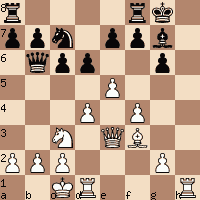
A Good way to clear your Mind
It took almost 20 minutes to penetrate to the heart of the matter.
About 15 minutes into the analysis, I walked away from the board to get a drink of water because I knew I wasn’t seeing the position clearly. When I sat back down, the answer came almost immediately.
This “brief walk around” has served me well on many occasions. It clears the mind and can help reveal a new perspective. You often see the board with fresh eyes when you sit down again.
17.Bg4 Rfd8 18.e6!
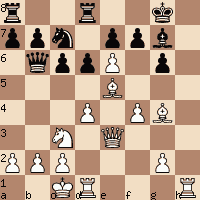
Now it becomes clear why the bishop went to g4. It was by far the most important move of the game, because it was vital to support the advance to e6.
18...f5 19.Be2 d5
My e pawn can’t be defended. However it has produced great things, because massive lines are about to open.
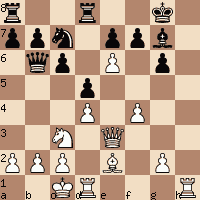
20.g4
This move reveals another benefit to the e6 advance. It provoked ...f5, and now I can use that pawn as a lever to open the g file.
20...Rd6 21.gxf5 gxf5 22.Rdg1 Nxe6
Similar things happen after 23...Rxe6.
23.Qh3
How to Create Focal Points
This is one of the most powerful attacking concepts you will ever add to your arsenal. A focal point is a square deep in your opponent’s position you can occupy with one of your pieces. Here’s the two main ways to create a focal point:
Create Converging lines of force
Most often this is represented by a diagonal and vertical line that converge on a single square.
For example, in diagram above, pretend for a moment White had a bishop posted on e5. In that case g7 would become a “focal point.”
Create a battery
In the current position, the queen and rook create a powerful “battery” that dominates the h file.
23...Qxd4
Preponderance of Force
There was no defense. Preponderance of force is another powerful attacking concept. Let’s calculate the total attacking points and total defending points in this position:
- Attack (Q,R,R,B) 9+5+5+3 Total = 22
- Defense (Q,N,B) 9+3+3 Total = 15
This kind of imbalance in the attacking sector will yield a victory over 90% of the time. Use preponderance of force to help you decide when you to attack.
24.Qh8+
Adjacent Focal Points
When you have two focal points on adjacent squares, the attack will be decisive a great deal of the time. In this case, White has three adjacent focal points on h7, h8, and g7.
The attack has to be unstoppable!
This variation also points out the great value of opening the g file … as the pin on Black’s bishop made Qh8 possible. This reminds us one final time of the importance of Bg4 followed by e6 … which provoked f5 … which allowed White to pry open the g file.
This last paragraph illustrates the cause/effect nature of chess. Every move creates new possibilities, and all the moves are linked together in a series of transformations.
Do your best to understand the implications of your moves. This will take you a long way towards mastery.
Do your best to understand the implications of your moves (Bg4!). This will take you a long way towards mastery.
24...Kf7 25.Bh5+
It is only fitting that the final blow is delivered by the light squared bishop (see note to move 11).
25...Kf6 26.Rg6+ Kf7 27.Rh6 mate.
Let’s summarize the themes we’ve covered in the order they appeared. You might want to write them down, and create a master list to review every now and then.
This will help you master key concepts at a deeper level. Before long you will automatically factor them into your thinking at the board. This is a technique I used to improve my own play, and it helped a great deal.
Summary of Themes
- Exploit opening inaccuracies by forming a strong plan.
- Evaluate strategic consequences of each piece exchange.
- Play against squares of a certain color.
- Know when to advance pawns on Knights.
- Know the pros and cons of trading pawns.
- Clear your mind.
- Create focal points. Better yet, create adjacent focal points.
- Use preponderance of force.
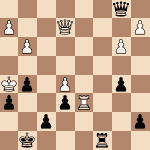
This is a very good example for beginners!